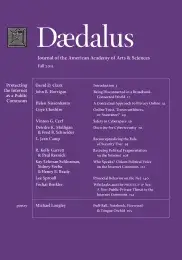What are the Consequences of Being Disconnected in a Broadband-Connected World?
The evolution of the Internet in the past decade — from a slow, stationary, and primarily communications-based technology to a mobile, fast technology that supports a range of communication, participatory, and transactional applications — has made access more valuable, and disconnection more consequential, for individuals. This evolution means that stakeholders should embrace a different framing of the digital divide, focusing on the costs of digital exclusion. These costs can fall on an individual, if the Internet is the only way to carry out some tasks, and on society, if expensive and less-efficient legacy systems must be maintained to serve a shrinking minority without access. Whereas the digital divide debate concerns technology scarcity for certain population segments, addressing the costs of digital exclusion is about developing people’s capacity to manage today’s abundance of digital resources. This essay offers suggestions on a framework to develop tools that will enable individuals to take advantage of the affordances of broadband.
Ten years ago, the debate over the digital divide was mainly a binary one about access: some people had a computer (and therefore dial-up access to the Internet), and some did not. This disparity was widely thought to be unfair because not all members of society could take advantage of the brave new world of the Internet–that is, the easy connectivity to other people and a wealth of information. Those without access were cut off from the benefits of communicating with others (for the most part via email and sometimes on more organized many-to-many groups, such as Listservs).
Stakeholders should embrace a different framing of the digital divide, one that acknowledges the need for a broader range of policy measures to address imbalance in the adoption of broadband Internet. While the digital divide debate should not abandon equity arguments, it should also consider the costs to individuals and to society of having a sizable portion of the population offline. The high and rising cost of digital exclusion makes a lack of Internet access more disadvantageous today than a decade ago. Furthermore, lower levels of engagement with online resources among those who are online are more consequential than a few years ago.
Policy measures to address the inequities of the digital divide have rightly focused on providing access to necessary hardware and giving users the computer skills to negotiate the basics of an online session. Some initiatives refurbished old computers and either gave them to people who could not otherwise afford them or sold them at a cut rate. Grant programs–funded by the federal government, states, or localities–were undertaken to support hardware and training for low-income people. Nonprofit organizations also seized the opportunity to bring access to less well-off Americans; some managed to scale their initiatives regionally or nationally.
. . .
